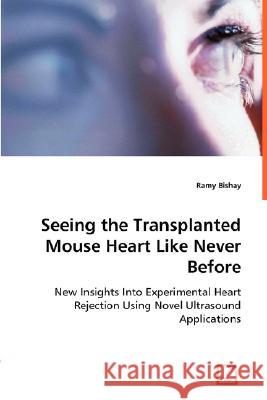Seeing the Transplanted Mouse Heart Like Never Before » książka
Seeing the Transplanted Mouse Heart Like Never Before
ISBN-13: 9783836487382 / Angielski / Miękka / 2008 / 184 str.
Heart rejection is a major problem for heart transplant patients. The best strategy for understanding and preventing organ rejection is to study experimental animal models. The popular mouse model of heterotopic cardiac transplantation has been used for over three decades to help investigators understand the pathogenesis of graft rejection and in turn, how novel drugs can attenuate the immune response to transplanted organs. Also, since the genetic blueprint of mice is well-known, specific genes can be modified to study its effect on graft acceptance and tolerance. Despite the large potential for this model, little is known about the physiology, haemodynamics, and morphology of the transplanted heart and there is no method to assess objectively graft survival. This work describes in detail the use of high-frequency ultrasound for investigating the small transplanted mouse heart. For the first time, insights are made into blood flow, the effects of graft rejection, and organ survival with never before seen high-resolution images unachievable with conventional ultrasound. This work will be of significant interest to investigators, clinicians and students in the field.











